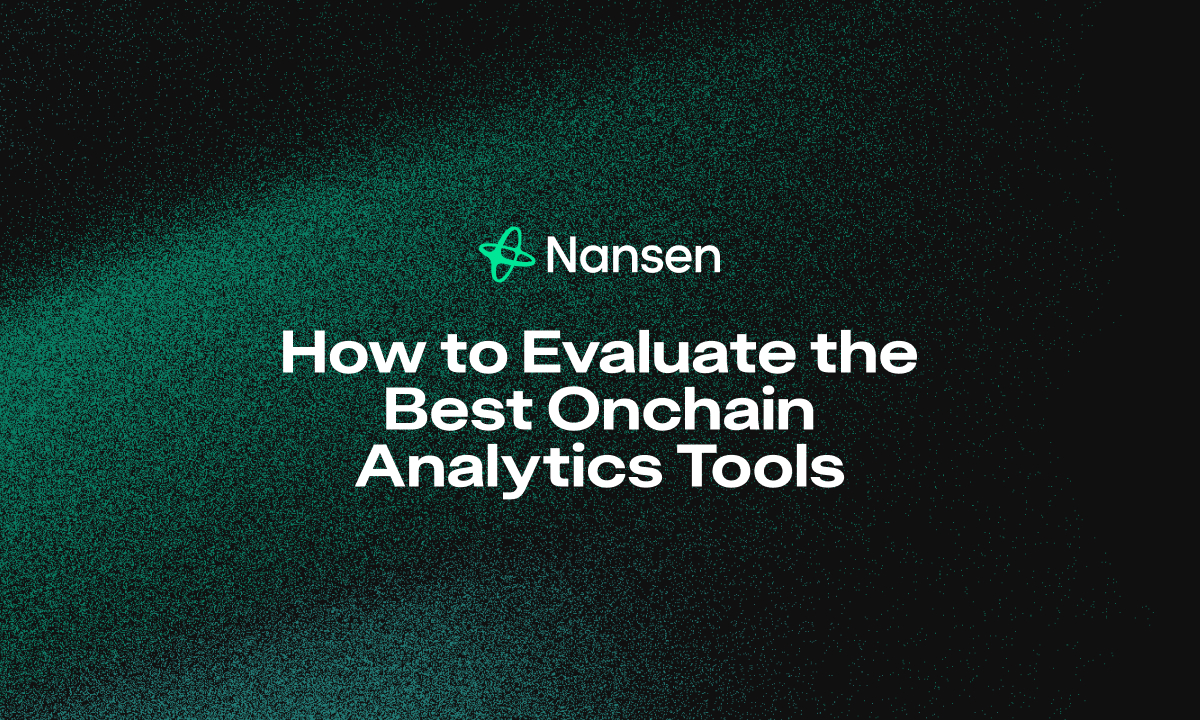Onchain analytics tools analyze blockchain data directly from the source — the blockchain itself. Unlike price charts or social media sentiment, on-chain data shows actual network activity: transactions, wallet behaviors, and smart contract interactions.
Key benefit: On-chain data provides objective information about what's actually happening on a blockchain network, not just what people are saying about it.
For example, if you spot large accumulations by long-term holders during a price dip, it might signal strong conviction despite market fear. Conversely, if you notice early investors moving coins to exchanges during a rally, it could warn of potential selling pressure.
Essential Features to Look For
1. Blockchain Data Visualization Tools
Raw blockchain data is notoriously complex. The best analytics platforms transform this data into visual formats that make patterns immediately apparent.
Look for:
- Interactive charts and graphs
- Customizable dashboards
- Heatmaps showing activity concentration
- Network flow visualizations
A good visualization tool turns millions of data points into actionable insights at a glance. For example, seeing wallet clusters visually can help identify whale movements that might impact prices.
2. Real-time Transaction Monitoring
Crypto markets move fast. Yesterday's data might already be outdated.
Effective real-time monitoring should include:
- Live transaction feeds for addresses you're tracking
- Automated alerts for suspicious activity
- Quick refresh rates on dashboard metrics
- Historical comparison features
Pro tip: Tools that offer customizable alerts for specific transaction sizes or wallet activities can give you a crucial time advantage.
3. Entity Attribution in Blockchain
One of blockchain's challenges is connecting addresses to real-world entities. Top analytics platforms maintain extensive databases that tag addresses belonging to exchanges, miners, known projects, and sometimes individuals.
Quality entity attribution systems should:
- Regularly update their database of known entities
- Show confidence levels for attributions
- Allow users to create custom entity tags
- Track entity relationships over time
This feature helps you understand who's behind significant transactions, turning anonymous addresses into meaningful market players.
4. Cross-chain Analysis Capabilities
With thousands of cryptocurrencies across multiple blockchains, comprehensive coverage matters.
The best tools provide:
- Support for major blockchains (Bitcoin, Ethereum, Solana, etc.)
- Analysis of cross-chain bridges and transfers
- Comparable metrics across different networks
- Integrated views of multi-chain portfolios
As funds flow between blockchains, tracking these movements gives you a complete picture of the market.
5. Wallet Classification Accuracy
Not all wallets behave the same way. Analytics tools should classify wallets based on their behavior patterns.
Look for classifications like:
- Long-term holders vs. active traders
- Institutional vs. retail wallets
- Mining entities vs. exchanges
- DeFi users vs. NFT collectors
Why it matters: Understanding wallet behavior helps predict future market movements. For example, if historically stable "diamond hand" wallets start moving coins, it could signal a major market shift.
6. Risk Scoring Algorithms
For those concerned with regulatory compliance or avoiding tainted funds, risk scoring is essential.
Effective risk scoring includes:
- Transparent methodology for assigning risk levels
- Connection to known high-risk entities
- Transaction history analysis
- AML compliance integration
These features are particularly important if you're managing a business or larger portfolio with compliance requirements.
7. Blockchain Knowledge Graphs
Advanced analytics platforms use knowledge graphs — network structures showing relationships between addresses, transactions, and entities.
Benefits include:
- Visualizing complex connections between market participants
- Tracing fund flows through multiple hops
- Identifying clusters of related addresses
- Discovering hidden relationships between entities
Knowledge graphs transform isolated data points into an interconnected web of information, revealing patterns that might otherwise remain hidden.
Common Questions About Onchain Analytics
What features should I look for in an onchain analytics tool?
Beyond what we've covered, consider:
- User interface simplicity
- Data export options
- API access for custom integrations
- Historical data depth
- Educational resources
- Pricing tiers that match your needs
The right mix depends on your investment style, technical expertise, and specific goals.
How do onchain analytics platforms ensure data accuracy?
Reputable platforms typically:
- Run their own blockchain nodes
- Cross-validate data from multiple sources
- Maintain transparent data provenance records
- Implement quality control checks
- Publish their methodology
- Quickly address and correct discrepancies
Trust factor: Look for platforms that openly discuss their data sources and validation methods.
Which onchain metrics are most useful for crypto investors?
While this varies by strategy, valuable metrics include:
- Network value to transactions ratio (NVT)
- Active addresses and growth rates
- Exchange inflow/outflow balances
- Supply distribution across wallet sizes
- Miner position changes
- Smart contract interactions
- Network fee analysis
Focus on metrics relevant to your investment timeframe and strategy.
Why is real-time monitoring important in blockchain analytics?
Real-time data lets you:
- React quickly to market-moving events
- Identify emerging trends before they're widely recognized
- Execute time-sensitive trading strategies
- Receive alerts about unusual activity in your holdings
- Monitor transaction confirmations for your own transfers
In crypto's 24/7 market, timing often makes all the difference.
Making Your Decision
Choosing the right onchain analytics tool comes down to your specific needs:
- Casual investors might prefer user-friendly platforms with clear visualizations and basic metrics
- Active traders need real-time monitoring and detailed network analysis
- Institutions require robust compliance features and entity attribution
- Developers might prioritize API access and cross-chain capabilities
Most platforms offer free trials or limited free tiers—test drive several before committing.
Remember that onchain analytics are just one component of a comprehensive investment strategy. They work best when combined with fundamental analysis, market sentiment tracking, and sound risk management.
The blockchain never sleeps, but with the right analytics tools, you might just rest a little easier.




